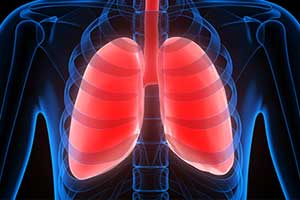- Home
- Editorial
- News
- Practice Guidelines
- Anesthesiology Guidelines
- Cancer Guidelines
- Cardiac Sciences Guidelines
- Critical Care Guidelines
- Dentistry Guidelines
- Dermatology Guidelines
- Diabetes and Endo Guidelines
- Diagnostics Guidelines
- ENT Guidelines
- Featured Practice Guidelines
- Gastroenterology Guidelines
- Geriatrics Guidelines
- Medicine Guidelines
- Nephrology Guidelines
- Neurosciences Guidelines
- Obs and Gynae Guidelines
- Ophthalmology Guidelines
- Orthopaedics Guidelines
- Paediatrics Guidelines
- Psychiatry Guidelines
- Pulmonology Guidelines
- Radiology Guidelines
- Surgery Guidelines
- Urology Guidelines
Hair-sized probe can help monitor development of lung disease

Dr Tushar R. Choudhary at Institute of Biological Chemistry, Biophysics and Bioengineering, School of Engineering & Physical Sciences, Heriot-Watt University, Edinburgh, UK and colleagues have developed a hair-sized probe that can measure key indicators of tissue damage deep inside the lungs, that can help monitor the development of diseases such as pneumonia.
The probe consists of an optical fibre -- with a diameter of about 0.2 millimetres (mm) -- that holds 19 sensors, according to the research published in the journal Scientific Reports.
Each sensor can measure different indicators in tissues, such as acidity and oxygen levels, which provide important information on the body's reaction to disease processes. Physiological sensing deep in tissue remains a clinical challenge. Here a flexible miniaturised sensing optrode providing a platform to perform minimally invasive in vivo in situ measurements is reported.
The technology, developed by researchers from the Heriot-Watt University and the University of Edinburgh in the UK, paves the way for accurate monitoring of tissue in areas where existing technologies cannot reach.
Lung diseases are one of the leading causes of death and disability in the world. Despite significant advances, little is known about how the disease develops in patients suffering from pneumonia or lung injury.
According to the team, the probe can pick up tiny changes in tissue health and could improve how patients are assessed and treated, specifically those on ventilators in intensive care.
The technology is designed to offer fast, accurate measurements and the flexibility to add more sensors, researchers said.
The technology can be applied to other regions of the body and may be used to aid the understanding of inflammatory and bacterial diseases.
"These new methods, if taken to the clinic, will lead to novel insights in disease biology. Our aim now is to expand the number of unique sensors on this miniaturised platform to provide even more information," Michael Tanner, from the University of Edinburgh.

Disclaimer: This site is primarily intended for healthcare professionals. Any content/information on this website does not replace the advice of medical and/or health professionals and should not be construed as medical/diagnostic advice/endorsement or prescription. Use of this site is subject to our terms of use, privacy policy, advertisement policy. © 2020 Minerva Medical Treatment Pvt Ltd